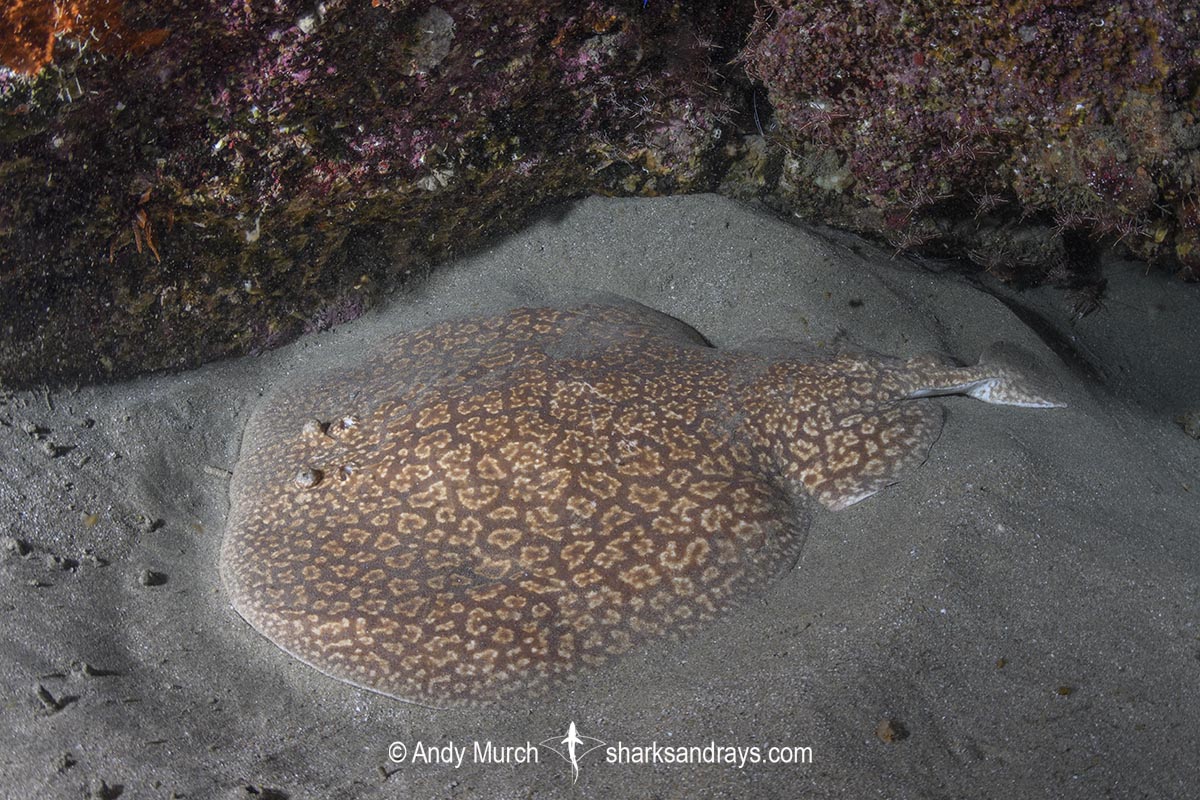Common name(s)
Gulf Torpedo Ray, Marbled Electric Ray, Persian Gulf Torpedo Ray, Variable Torpedo Ray.
Bionomial
Torpedo sinuspersici
Synonyms
Torpedo sinuspersi, Torpedo zugmayeri.
Identification
A medium-large torpedo ray with a broad sub-circular disc. Snout short, tip straight across, sometimes with slight indentations at the pectoral origins. Pectoral fin apices evenly rounded. Eyes small; slightly smaller than spiracles. Spiracles with 9-10 short papillae. Posterior papillae longer than lateral papillae. Mouth arched. Nostrils with large nasal flaps.
Pelvic fins broad and relatively short, margins broadly rounded. Tail short and broad based. First dorsal fin tall with broadly rounded apice and posterior margin. First dorsal posterior margin over pelvic fin. Second dorsal fin noticeably smaller than first. Caudal fin high and large, sub-triangular or oval, apices broadly to narrowly rounded, posterior margin straight or convex.
Colour
Dorsum highly variable. Usually brown to dark brown with a dense pattern of pale reticulations that sometimes form leopard-like spots. Young often have more sparsely separated pale spots.Ventrum creamy white.
Size
Maximum length at least 80cm, reportedly 130cm. Males mature at less than 30cm.

Conservation Status
DATA DEFICIENT
The gulf torpedo ray may represent a complex of multiple species.

Habitat
Temperate and tropical seas. Benthic on soft bottoms around coral and rocky reefs. Continental shelf, from close inshore to 150m.
Distribution
The gulf torpedo ray is found on the western side of the Indian Ocean from Iran (possibly India) to South Africa, including the Persian Gulf, Red Sea, and around Madagascar.
Reproduction
Aplacental viviparous. Litter size 9-22.
Diet
Diet consists of small benthic fishes.
Behavior
Nocturnal; remains buried under sand during the day.
Gulf torpedo rays produce electric discharges to incapacitate prey.
Reaction to divers
Very easy to approach. Rarely swims away even when uncovered by fanning sand away. May try to shock divers when threatened.
Diving logistics
Gulf torpedo rays are encountered at numerous spots throughout their range, but it should be noted that T. sinuspersici is probably a species complex so animals seen in the Persian Gulf are very likely to be a different species from those seen in South Africa.
At the southern tip of their range, Gulf Torpedo Rays are quite common around Sodwana Bay in northeast South Africa. During the day, it is usually easy to find a few buried in the sand under the some of the larger reef ledges at Stringer Reef.
What’s new
View our full list of updates
Similar species
Panther Torpedo Ray Distinguishable by dorsal pattern consisting of small light spots that do not form clusters.





